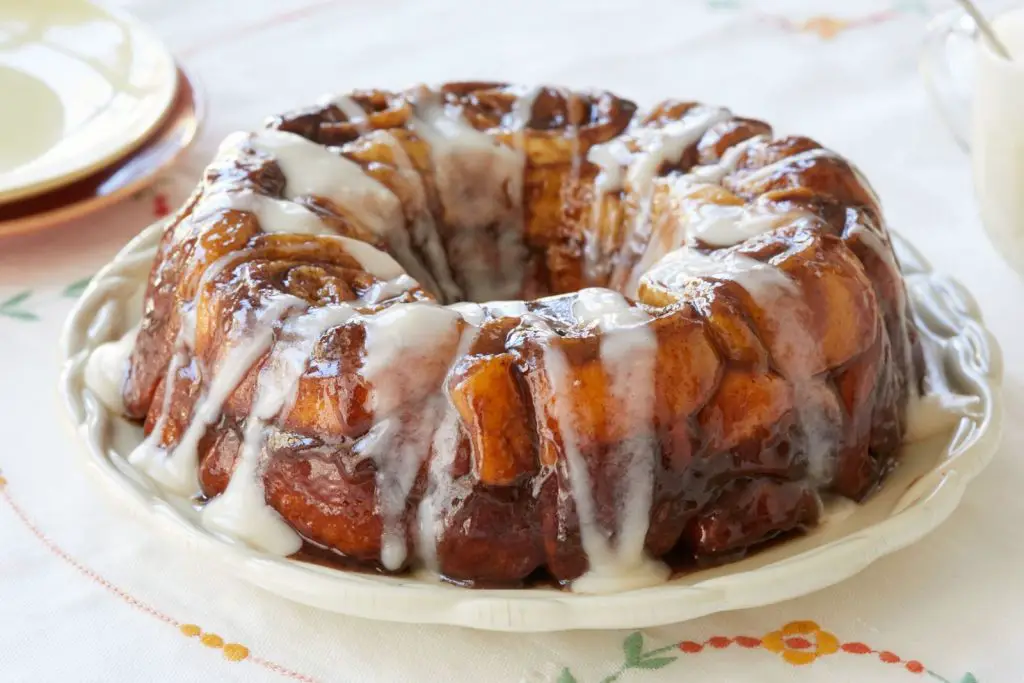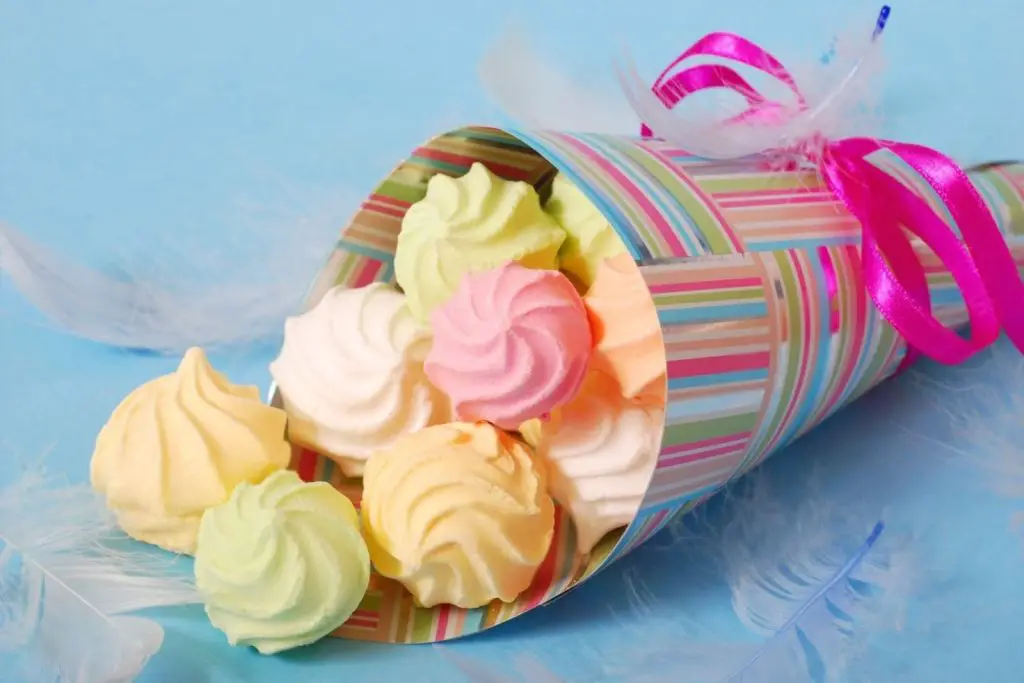
Fish cakes are a delicious and versatile seafood dish that can be enjoyed in various ways. Whether you’ve made a large batch of fish cakes or have leftovers from a meal, freezing them is a great option to extend their shelf life and ensure you always have a quick and tasty meal on hand. Freezing fish cakes properly will help maintain their texture, flavor, and quality. In this article, we will guide you through the process of freezing fish cakes step by step, so you can enjoy them at your convenience without worrying about spoilage.
Here’s a step-by-step guide on how to freeze fish cakes:
- Step 1: Prepare fresh fish cakes
- Step 2: Allow the fish cakes to cool
- Step 3: Wrap each fish cake individually
- Step 4: Place the wrapped fish cakes in a freezer-safe container
- Step 5: Label the container
- Step 6: Freeze the fish cakes
- Step 7: Store the fish cakes in the freezer
- Step 8: Thaw and reheat as needed
Step 1: Prepare fresh fish cakes
When it comes to freezing fish cakes, it is crucial to start with fresh ones. You have two options: you can either make them from scratch or purchase pre-made fish cakes from a trusted source. Whichever option you choose, there are a few important factors to consider.
Firstly, the choice of fish is essential. Opt for fresh fish that is suitable for making fish cakes. White fish such as cod, haddock, or pollock are commonly used, but you can also experiment with other types of fish like salmon or tuna for a different flavor. Make sure the fish is of high quality and doesn’t have a strong fishy odor, as this can affect the taste of the final product.
Additionally, consider the seasonings and ingredients you want to incorporate into your fish cakes. You can add herbs, spices, onions, garlic, or even vegetables to enhance the flavor and texture. Be creative and choose seasonings that complement the fish you’ve selected.
Once you have your fish and seasonings ready, it’s time to cook the fish cakes. Thorough cooking is essential before freezing to ensure any potential bacteria or contaminants are eliminated. This step not only enhances the taste but also helps maintain the quality and safety of the fish cakes during freezing and storage.
You can cook fish cakes by pan-frying them in a bit of oil until they turn golden brown on each side or by baking them in the oven until they are cooked through. Follow a reliable recipe or cooking instructions provided by the manufacturer if you’re using pre-made fish cakes. Regardless of the method you choose, make sure the fish cakes are cooked all the way through, with an internal temperature of at least 145°F (63°C), as recommended by food safety guidelines.
Cooking the fish cakes thoroughly before freezing ensures that any potential bacteria or pathogens are eliminated, reducing the risk of foodborne illnesses. It also helps to maintain the texture and flavor of the fish cakes after freezing.
Can I freeze homemade fish cakes or only store-bought ones?
You can absolutely freeze homemade fish cakes. In fact, homemade fish cakes can be frozen just as effectively as store-bought ones. Simply prepare and shape the fish cakes according to your recipe, then allow them to cool before placing them in an airtight container or freezer bag for freezing. Freezing homemade fish cakes allows you to conveniently preserve any leftovers or prepare a batch in advance for future meals.
Step 2: Allow the fish cakes to cool
Once you have cooked your fish cakes to perfection, it’s important to allow them to cool completely before proceeding with the freezing process. Cooling the fish cakes is a crucial step that helps maintain their quality and prevents condensation and moisture buildup during freezing.
When the fish cakes are hot, they release steam, which contains moisture. If you place hot fish cakes directly into the freezer, the steam will turn into condensation and lead to the formation of ice crystals on the surface of the cakes. This can result in a loss of texture and quality when the fish cakes are thawed and reheated later.
By allowing the fish cakes to cool at room temperature, you give the excess heat and steam the opportunity to dissipate. This gradual cooling process helps reduce the moisture content on the surface of the fish cakes, preventing excessive ice crystal formation during freezing.
Cooling the fish cakes at room temperature also ensures even cooling throughout the cakes, as placing them in the refrigerator immediately after cooking can cause uneven cooling and potentially affect their texture.
It’s important to note that you should not leave the fish cakes out at room temperature for an extended period, as this can lead to bacterial growth. Once the fish cakes are cooked, let them cool for about 30 minutes to an hour, or until they reach room temperature. Afterward, you can proceed with the wrapping and freezing steps to preserve their quality.
Step 3: Wrap each fish cake individually
After the fish cakes have cooled completely, it’s time to wrap them individually before freezing. Wrapping each fish cake separately serves two main purposes: preventing them from sticking together and allowing for easy portioning when you want to retrieve a specific amount later.
When fish cakes are frozen without individual wrapping, they have a tendency to stick together. This can create difficulties when you want to separate them, leading to possible breakage or damage. By wrapping each fish cake individually, you create a protective barrier that prevents them from adhering to one another during the freezing process.
There are a few options for wrapping the fish cakes. Plastic wrap and aluminum foil are two commonly used materials. Plastic wrap is convenient as it clings tightly to the surface of the fish cakes, providing a secure and airtight seal. Aluminum foil, on the other hand, offers a bit more protection against freezer burn and is ideal if you plan to store the fish cakes for an extended period.
When wrapping the fish cakes, ensure they are completely covered and there are no exposed areas. This helps prevent freezer burn and maintains the quality of the fish cakes during storage. Make sure to wrap them tightly but not so tight that the shape of the fish cakes gets distorted.
Individual wrapping also facilitates portion control. When the fish cakes are frozen individually, you can easily remove as many as you need without having to defrost the entire batch. This is particularly useful when you want to prepare a quick meal or snack without the hassle of thawing more fish cakes than necessary.
Can I freeze fish cakes individually or should I freeze them in batches?
You have the flexibility to freeze fish cakes either individually or in batches, depending on your preference and convenience. Freezing them individually allows for easier portioning and flexibility in using only the desired quantity at a time. On the other hand, freezing them in batches can save space in the freezer and streamline the thawing and cooking process if you typically consume fish cakes in larger quantities. Choose the method that suits your needs best.
Step 4: Place the wrapped fish cakes in a freezer-safe container
After wrapping each fish cake individually, the next step is to store them in a freezer-safe container. This step is crucial for maintaining the quality and protecting the fish cakes during freezing and storage.
When selecting a freezer-safe container, there are a few options available. You can use plastic containers with airtight lids specifically designed for freezer use. These containers provide a sturdy and secure storage solution, keeping the fish cakes protected from freezer burn and odors.
Alternatively, you can use heavy-duty freezer bags made of thick, durable plastic. Freezer bags are a good choice when you want to save space, as they can conform to the shape of the fish cakes. They are also convenient for portioning and allow for easy stacking in the freezer.
Regardless of the type of container you choose, it’s important to arrange the wrapped fish cakes in a single layer. Placing them in a single layer ensures even freezing and prevents them from clumping together. It also allows for quicker and more uniform thawing when you’re ready to use them.
When placing the fish cakes in the container, be sure to leave some space between them. This space allows for proper air circulation, which helps maintain the quality and texture of the fish cakes during freezing. If the fish cakes are packed too tightly, they may stick together or become damaged.
Once the fish cakes are arranged in the container, seal it tightly to create an airtight seal. This prevents moisture and air from entering the container, reducing the risk of freezer burn and maintaining the freshness of the fish cakes.
Properly storing the wrapped fish cakes in a freezer-safe container ensures their protection, prevents them from sticking together, and maintains their quality during freezing and storage. This step sets the foundation for long-term storage and easy retrieval of the fish cakes when you’re ready to enjoy them.
Step 5: Label the container
Labeling the container is an important step in the freezing process as it helps you keep track of the freezing date and the contents of the container. This simple practice can greatly contribute to maintaining an organized freezer and ensuring you can easily identify the fish cakes when you need them.
When labeling the container, include the name of the dish, in this case, “Fish Cakes,” to clearly identify what is inside. This prevents confusion and allows you to quickly locate the fish cakes among other frozen items in your freezer. Additionally, including the name of the dish helps if you have multiple types of frozen fish cakes or other similar items.
In addition to the name of the dish, it’s essential to include the date of freezing. Write down the date when you are placing the fish cakes in the freezer. This information is crucial for keeping track of how long the fish cakes have been frozen. It helps you manage their freshness and quality by ensuring you consume them within the recommended storage time. Generally, fish cakes can be stored in the freezer for around 2 to 3 months while maintaining good quality.
By labeling the container, you create a clear reference point for the contents and freezing date. It allows you to prioritize the use of older fish cakes before newer ones, reducing the risk of them going past their optimal storage time.
Labeling the container also contributes to an organized freezer. When all your frozen items are properly labeled, you can easily locate and retrieve what you need without having to guess or open multiple containers to find the desired fish cakes. This saves time and minimizes the chances of thawing more fish cakes than necessary.
Step 6: Freeze the fish cakes
After properly labeling the container, it’s time to place it in the freezer for the fish cakes to freeze. The freezing process is crucial for preserving the quality and flavor of the fish cakes. Here’s why it’s important to handle the freezing step correctly:
- Even Freezing: When placing the container with the fish cakes in the freezer, it’s advisable to put it on a flat surface. This helps ensure that the fish cakes freeze evenly. Placing the container on a level surface allows for consistent cooling and freezing throughout the fish cakes. If the container is placed at an angle or on an uneven surface, the fish cakes may freeze unevenly, resulting in inconsistencies in texture and taste.
- Protection from Damage: It’s important to avoid stacking other items on top of the container with the fish cakes. Placing heavy objects on top can cause damage to the fish cakes, such as squashing or flattening them. This can lead to a loss of shape and texture. By keeping the container with the fish cakes separate and ensuring nothing is placed on top of it, you maintain the integrity of the fish cakes during the freezing process.
- Preservation of Quality: Freezing the fish cakes promptly after wrapping and sealing them helps preserve their quality. Freezing halts the growth of microorganisms and slows down enzymatic reactions, maintaining the flavor, texture, and nutritional value of the fish cakes. By placing them in the freezer promptly, you reduce the risk of any potential degradation or spoilage.
Remember to keep the freezer temperature at or below 0°F (-18°C) to ensure proper freezing. This low temperature helps maintain the quality of the fish cakes and prevents the growth of harmful bacteria.
Step 7: Store the fish cakes in the freezer
Once you have placed the container with the fish cakes in the freezer, it’s important to leave them undisturbed until you’re ready to use them. Proper storage in the freezer is crucial for maintaining the quality and safety of the fish cakes. Here’s why storing them correctly is essential:
- Maintaining Quality: The freezer acts as a preservation tool, keeping the fish cakes in a low-temperature environment that slows down the deterioration process. By storing the fish cakes in the freezer, you maintain their texture, flavor, and nutritional value for an extended period. The cold temperature helps prevent the growth of bacteria, mold, and yeast, which can lead to spoilage.
- Preventing Freezer Burn: Freezer burn occurs when food is exposed to air inside the freezer, resulting in the loss of moisture from the food. To prevent freezer burn, it’s important to ensure the container with the fish cakes is tightly sealed and airtight. This minimizes the exposure to air and helps preserve the quality of the fish cakes. Additionally, using freezer-safe containers or bags with good sealing properties can help protect against freezer burn.
- Organized Freezer: Storing the fish cakes properly in the freezer contributes to an organized freezer space. Make sure to place the container in a designated area where it won’t get jostled or moved around frequently. This allows for easy access and prevents damage to the container or fish cakes. Keeping the freezer organized also helps you quickly locate the fish cakes when you need them, saving you time and effort.
- Recommended Storage Time: It’s important to be mindful of the recommended storage time for the fish cakes. While they can generally be stored for 2 to 3 months, it’s best to check the specific guidelines for the type of fish cakes you have made or purchased. Properly labeling the container with the freezing date helps you keep track of how long the fish cakes have been stored in the freezer and ensures you consume them within the recommended time frame.
Step 8: Thaw and reheat as needed
When the time comes to savor the frozen fish cakes, it’s important to follow proper thawing and reheating procedures to ensure they are safe to eat and retain their delicious taste. Here’s a step-by-step guide on thawing and reheating frozen fish cakes:
- Thawing in the refrigerator: Start by removing the desired number of fish cake portions from the freezer. Place them in a container or on a plate and allow them to thaw in the refrigerator overnight. Thawing in the refrigerator is the safest method as it maintains a controlled temperature and prevents the growth of bacteria. The slow thawing process ensures the fish cakes thaw evenly and reduces the risk of moisture loss.
- Reheating options: Once the fish cakes are thawed, there are different methods you can use to reheat them. Two common methods include using a preheated oven or reheating on a stovetop.
- Oven: Preheat your oven to a moderate temperature, typically around 350°F (175°C). Place the thawed fish cakes on a baking sheet or in a baking dish. If desired, lightly brush them with oil or butter for added moisture. Bake the fish cakes in the oven until they are heated through, usually for about 15-20 minutes. Keep an eye on them to avoid overcooking or drying out.
- Stovetop: Heat a non-stick skillet or frying pan over medium heat. Add a small amount of oil or butter to the pan. Place the thawed fish cakes in the pan and cook for several minutes on each side until they are heated through. Flip them gently to prevent any breakage. Cooking times may vary depending on the thickness of the fish cakes.
- Ensuring safety: It’s important to ensure that the internal temperature of the reheated fish cakes reaches 165°F (74°C) to ensure they are safe to eat. Using a food thermometer, check the temperature at the thickest part of the fish cakes. This temperature ensures any harmful bacteria present in the fish cakes are killed, reducing the risk of foodborne illness.
Other related questions
Can I refreeze previously thawed fish cakes?
It is generally not recommended to refreeze previously thawed fish cakes. When you thaw fish cakes, the process causes some moisture loss and can lead to changes in texture and taste. Refreezing them after they have been thawed and cooked may further impact their quality, resulting in a loss of flavor and texture. Additionally, repeated thawing and refreezing can increase the risk of bacterial growth and foodborne illness. To maintain the best quality and safety, it is advised to only thaw and cook the amount of fish cakes that you intend to consume in one sitting.
How do I know if my frozen fish cakes have gone bad?
There are a few indicators to look for to determine if your frozen fish cakes have gone bad. First, check for any signs of freezer burn, such as discoloration or dry, white patches on the surface of the fish cakes. Additionally, if the fish cakes develop an off-putting odor or an unusual smell, it is likely an indication of spoilage. Finally, if there are any noticeable changes in texture, such as excessive softness, mushiness, or a slimy coating, it’s best to discard them as these are signs of spoilage. When in doubt, it is safer to err on the side of caution and dispose of any fish cakes that exhibit these signs.
Can I use frozen fish cakes with the fresh ones?
Yes, you can use frozen fish cakes alongside fresh ones. However, it’s important to consider the differences in cooking times and adjust accordingly. Frozen fish cakes will take longer to cook than fresh ones since they need to thaw and heat through. It’s recommended to partially thaw the frozen fish cakes before adding them to a recipe with fresh ones, or cook them separately and combine them at the end. This will ensure that both the frozen and fresh fish cakes are cooked to the appropriate doneness without compromising the overall dish.
Can I freeze fish cakes with sauce or dip?
It is generally not recommended to freeze fish cakes with sauce or dip. Freezing sauces or dips can result in changes in texture and separation when thawed, affecting their overall quality. It is best to freeze the fish cakes separately from the sauce or dip. You can freeze the fish cakes and prepare the sauce or dip fresh when you are ready to serve them.








